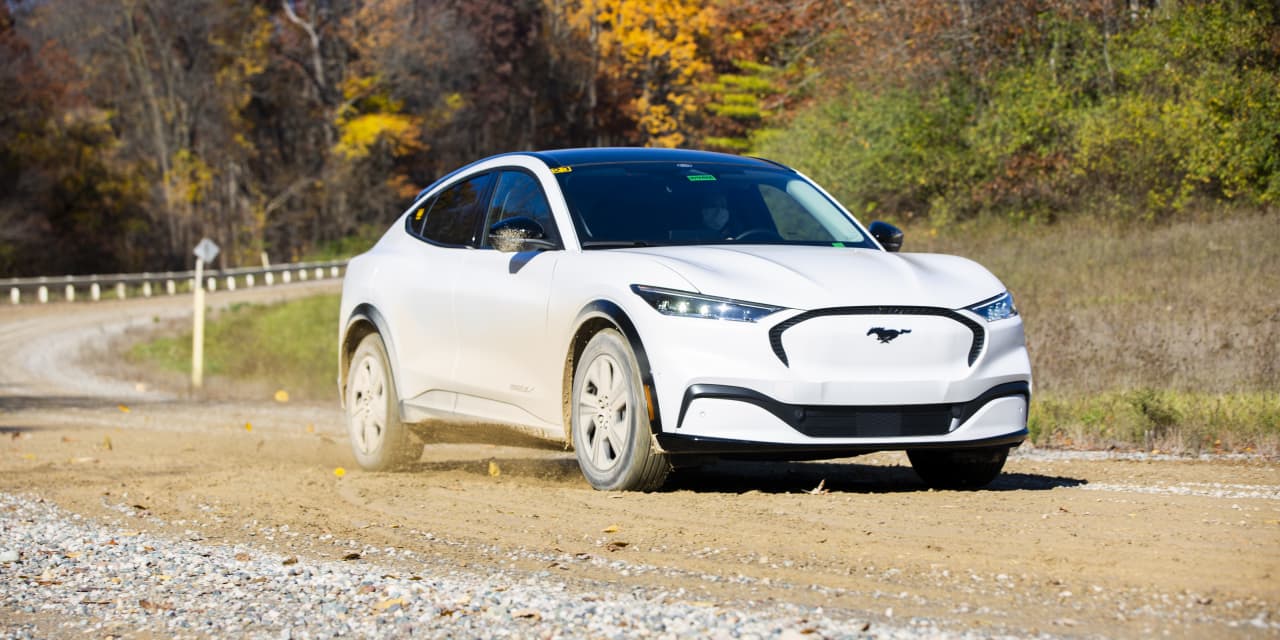Electric vehicle growth has hit a speed bump which has upended business plans and the automotive stocks. All of the problems, including high interest rates and weak product lineups, can be overcome.
“While near-term, we could very well be experiencing an EV slowdown in the U.S. and Western Europe, the medium- and long-term EV thesis is still very much intact,” wrote RBC analyst Tom Narayan in a Wednesday report.
The problems are occurring in a growing market. Through September, sales of all battery electric vehicles, or BEVs, were up about 50% year over year in both the U.S. and Europe. In China, where BEVs account for some 25% of all new car sales, growth has been closer to 20%.
About 7.1 million BEVs sold so far in 2023, or about 11% of all light vehicles sold globally. In 2022, BEV penetration amounted to roughly 9%.
Not everyone is benefiting from growth equally.
Ford Motor
(ticker: F) U.S. BEV sales were up roughly 12% year to date through September, but BEVs account for just 3% of its overall sales.
General Motors
(GM) U.S. BEV penetration is similar.
Both expected better. Failure to get more significant traction has both auto makers slowing some $12 billion in EV-related spending. Investors have punished those stocks for EV failures; they are also being hurt by rising interest rates. GM and Ford shares are both down about 25% over the past 12 months.
Tesla
(TSLA) shares have fared better. Its stock is up about 30% over the past 12 months while the S&P 500 has gained 14%. But Tesla is experiencing slower growth, too. Wall Street expects 2.2 million Tesla shipments in 2024, up about 22% compared with 2023 but far from Tesla’s target for 50% average annual unit growth. A year ago, that 2024 estimate was closer to 2.6 million.
The company “candidly admitted [it] is now in an intermediate low-growth period,” wrote Deutsche Bank analyst Emmanuel Rosner in a Tuesday report.
Tesla’s Model 3 and Y have been out for years, the car maker will be introducing a new platform to make smaller, less expensive EVs. “In this context, and with a shallower EV adoption curve than expected, as well as macro pressure, the company will look to expand output at Austin/Berlin [plants] very gradually,” added Rosner.
All the U.S. auto makers need more EV trucks and sport-utility vehicles., says RBC’s Narayan. Currently, there are a lot of small crossover sized BEVs for sale, but many Americans want larger vehicles.
Rivian Automotive
(RIVN) success tells a story. It sells only trucks and SUVs and its limited product mix has made it the fifth-largest seller of BEVs in the U.S. with sales up almost 200% through the first nine months of 2023.
EVs are getting more affordable relative to traditional vehicles, but they still sell at a premium. The average new car cost U.S. buyers about $48,000 in October, according to Kelly Blue Book. The average BEV costs about $52,000. That’s a spread of $4,000. A year ago the spread was about $16,000.
Even when prices reach parity, some Americans will be slow to warm to EVs. There is still the problem of charging infrastructure and the fear of running out of juice or being unable to recharge far away from home. That fear is overstated, according to Narayan, who looked at U.S. charging infrastructure and concluded it is, frankly, OK for most drivers, especially considering most U.S. households have two cars.
Still, drivers don’t like to wait. Current technology delivers about 50 or 75 miles of range in 10 or 15 minutes.
The final impediment to EV sales is rising interest rates. Most cars are financed, and higher rates mean higher monthly payments. “If there’s any [EV] deceleration, it’s probably more to do with customers just not wanting to pay,”
Beam
(BEEM) CEO Desmond Wheatley tells Barron’s. Beam makes EV charging equipment.
Wheatley echoes what Tesla CEO Elon Musk lamented on his company’s third-quarter earnings call on Oct. 18. “I just can’t emphasize this enough that the vast majority of people buying a car is about the monthly payment,” said Musk.
The average monthly payment for a new car is $733, according to Edmunds. In the third quarter of 2019, before COVID-19, the number was about $570. Payments are up almost 30%. Average wages are up about 20% over that span, according to the Federal Reserve.
If interest rates fall, EV growth should accelerate again. That would be good for not only for Tesla. but for traditional auto makers such as Ford and GM.
Among shares of U.S. auto makers Narayan rates Tesla and GM Buy. He rates Ford and Rivian Hold. Rosner rates shares of Tesla and Rivian Buy. He rates shares of GM Hold and Ford Sell.
Write to Al Root at [email protected]
Read the full article here


